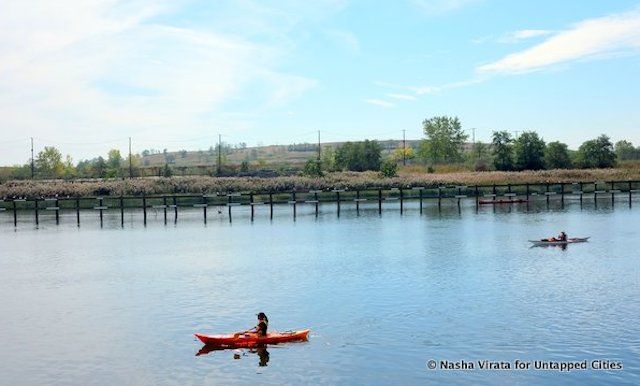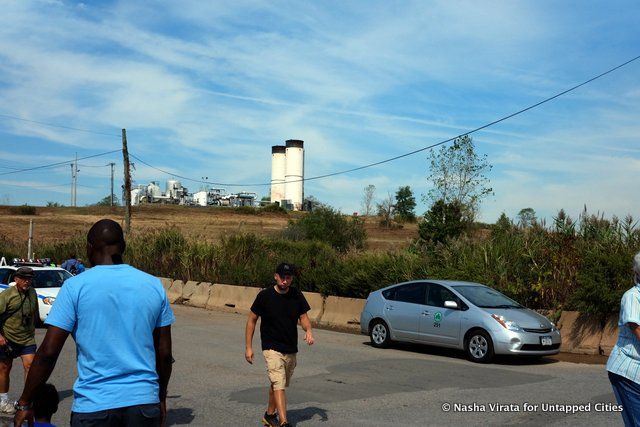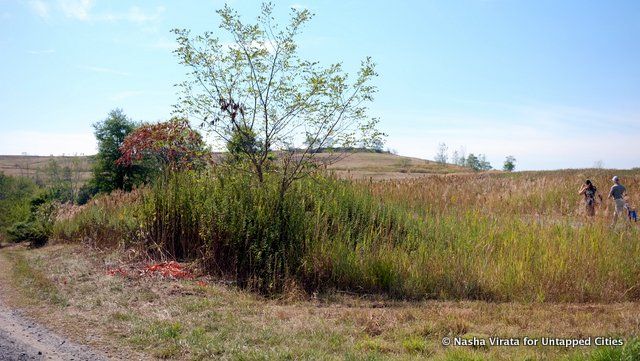Last-Minute NYC Holiday Gift Guide 🎁
We’ve created a holiday gift guide with presents for the intrepid New Yorker that should arrive just in time—


Since 2009, Untapped Cities has covered the transformation of Staten Island’s Fresh Kills from the world’s largest garbage dump into FreshKills Park, the second-largest in the city and roughly three times the size of Central Park. The deliberate change of the name Fresh Kills to FreshKills may seem a bit odd but it doesn’t compare to the amazing fact that New York City is replacing a giant pile of trash–the largest man-made structure on earth–with a park over the course of 30 years.

Compared to last year’s Sneak Peak, held for the public by the FreshKills Park Alliance once a year, we can see slow but steady progress. Appropriately, sustainability was a recurring theme of the various activities. Staten Island MakerSpace’s booth was filled with kid-friendly solar-powered robots made of recycled materials.Uncommon Pages offered workshops where children learned how to make notebooks that used the park’s invasive wetlands. Many visitors also attended “Fashionista”, the runway show held by Fresh Youth which used recycled materials such as plastic bottles and cardboard boxes. However, the most popular draw was definitely “Junk”, two separate climbing walls also made out of recycled waste.
Other activities, kayaking, hiking or biking, walking tours provide unparalleled views of Manhattan and the park’s landscape itself, highlighting the opportunity in the 2200 acres.
Meanwhile the decision to include live music and trendy food trucks seemed an acknowledgement that the park must be seen as a “destination” in order to work, given its location in the “forgotten borough” and the relative distance, where coming from Manhattan involves the ferry and an additional twenty minute bus ride.
The team behind FreshKills Park eagerly drew attention to the natural methods used for the development. One in particular held the most amusement–the use of goats to remove invasive species, an environmentally-friendly and efficient way.
Last year, the park’s lead architect, James Corner of Field Operations, perhaps best-known as the lead designer of the High Line, was quick to point out the difference between the two sites. Yet from another perspective, there share some remarkable similarities. Both were widely considered by the public as derelict areas not worth bothering over and both aim for innovative approaches to urban reuse.

Nevertheless, seeing the park during its transitional years is just as, if not more interesting than waiting for the park opening in thirty years. Native wildlife has returned and some hiking areas are simple natural landscapes. New York’s constant state of change, it is easy to wind up going to the latest opening or newest thing. FreshKills is a compelling contrast, where a visit today is worth more than waiting for the opening in thirty years.
For more on the evolution and history behind FreshKills park, a brief video explains the steps taken with the Municipal Art Society and the Bloomberg administration.
More information on upcoming tours, an overview of the engineering behind the transformation and a virtual tour is on the FreshKills Park Alliance website or @freshkillspark.
Subscribe to our newsletter